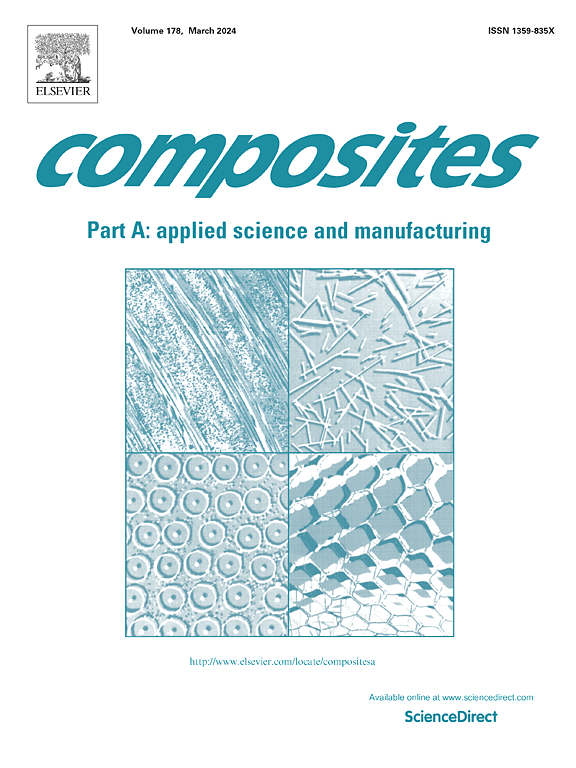纳米工程骨水泥的最新进展和未来展望:最新进展综述
IF 8.1
2区 材料科学
Q1 ENGINEERING, MANUFACTURING
Composites Part A: Applied Science and Manufacturing
Pub Date : 2025-05-02
DOI:10.1016/j.compositesa.2025.108991
引用次数: 0
摘要
骨水泥(Bone cement, bccs)是骨科治疗中的多功能支架,可提供骨组织再生所需的早期愈合稳定性和物理化学功能,在当前个性化医疗的趋势下,其表现出量身定制的性能,以满足多种临床需求。然而,即使是应用最广泛的商用bc,如聚甲基丙烯酸甲酯(PMMA)和磷酸钙水泥(CPC),也有明显的局限性(例如,不合适的生物降解性和低机械强度)。在过去的二十年中,尖端的纳米技术已经成为流行的多功能增强bc。本文综述了近年来利用纳米技术在机械增强、生物降解调节和抗菌性能提高等方面的研究进展。综述了纳米技术的研究进展,包括纳米添加剂作为功能添加剂的种类,以及纳米添加剂掺入bc的相关技术,并对其基本理论和必要的潜在机制进行了讨论。特别地,比较了不同纳米工程策略的bc,并讨论了研究开发与临床应用之间存在的差距。本文旨在弥合纳米技术在实验室环境下驱动的bc快速发展与临床应用之间的差距。本文章由计算机程序翻译,如有差异,请以英文原文为准。
Recent advances and future prospects of nano-engineered bone cements: A state-of-the-art review
Bone cements (BCs) are multifunctional scaffolds in orthopedic treatments to offer the necessary early-healing stability and physico-chemical functionality for bone tissue regeneration, which presents tailorable performance to address diverse clinical demands under the current trend of personalized healthcare. However, even the most extensively applied commercial BCs, such as polymethyl methacrylate (PMMA) and calcium phosphate cement (CPC), have distinctive limitations (e.g., unsuitable biodegradability and low mechanical strength). Cutting-edge nano technologies have become popular in the last two decades for multifunctional enhancement of BCs. This paper overviews the latest advancements on the development of BCs using nano technologies in terms of mechanical enhancement, biodegradability tuning, and antibacterial capability improvement. The nano technologies have been reviewed both in the aspects of various types of nano additives as functional additives and the associated techniques for incorporating nano additives into BCs, where fundamental theories and the necessary underlying mechanisms were also discussed. In particular, BCs using different nano-engineering strategies are compared, and the existing gaps between research development and clinical application are discussed. This review aims to bridge the gap between the rapid advancement of BCs driven by nano technologies in laboratory-based environment and its clinical applications.
求助全文
通过发布文献求助,成功后即可免费获取论文全文。
去求助
来源期刊

Composites Part A: Applied Science and Manufacturing
工程技术-材料科学:复合
CiteScore
15.20
自引率
5.70%
发文量
492
审稿时长
30 days
期刊介绍:
Composites Part A: Applied Science and Manufacturing is a comprehensive journal that publishes original research papers, review articles, case studies, short communications, and letters covering various aspects of composite materials science and technology. This includes fibrous and particulate reinforcements in polymeric, metallic, and ceramic matrices, as well as 'natural' composites like wood and biological materials. The journal addresses topics such as properties, design, and manufacture of reinforcing fibers and particles, novel architectures and concepts, multifunctional composites, advancements in fabrication and processing, manufacturing science, process modeling, experimental mechanics, microstructural characterization, interfaces, prediction and measurement of mechanical, physical, and chemical behavior, and performance in service. Additionally, articles on economic and commercial aspects, design, and case studies are welcomed. All submissions undergo rigorous peer review to ensure they contribute significantly and innovatively, maintaining high standards for content and presentation. The editorial team aims to expedite the review process for prompt publication.
 求助内容:
求助内容: 应助结果提醒方式:
应助结果提醒方式:


